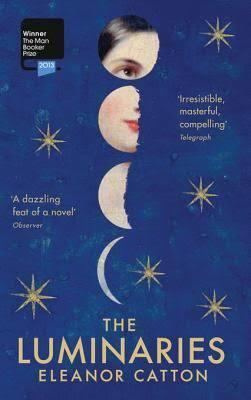8.6 /10 1 Votes8.6
5/5 The Telegraph Pages 848 pp. Originally published August 2013 Awards Booker Prize | 3.7/5 Goodreads Language English Media type Print, e-book ISBN 978-1-84708-431-6 OCLC 851827301 | |||||||||||||||||||||||||||||||||
 | ||||||||||||||||||||||||||||||||||
Nominations Goodreads Choice Awards Best Historical Fiction Similar The Rehearsal, The Narrow Road to t, A Brief History of Seven Kil, Bring Up the Bodies, The Goldfinch | ||||||||||||||||||||||||||||||||||
The luminaries by eleanor catton winner of the 2013 man booker
The Luminaries is the second novel by Eleanor Catton, published by Victoria University Press in August 2013 and Granta on 5 September 2013. On 15 October it was announced as the winner of the 2013 Man Booker Prize. It is the longest book (at 832 pages), and Catton the youngest author (at age 28), ever to win the award.
Contents
- The luminaries by eleanor catton winner of the 2013 man booker
- Eleanor catton reads from the luminaries
- Plot
- Structure
- Background and outlook
- Reception
- Awards and honours
- References
Catton described the novel as "a kind of weird sci-fi fantasy thing."
Eleanor catton reads from the luminaries
Plot
The plot follows Walter Moody, a prospector who travels to the fledgling West Coast of the South Island settlement of Hokitika, near New Zealand's goldfields in 1866 to try to make his fortune. Instead he stumbles into a tense meeting between twelve local men, who draw him in to the complex mystery behind a series of unsolved crimes.
Structure
Each of the twelve men who comprise the council in the first chapter of the book is associated with one of the twelve zodiac signs. The title of a chapter in which one of these men plays a major role is likely to contain that man's sign. The associations are as follows:
The conventional characteristics associated with each sign serve as a skeleton upon which Catton builds to create fully fledged characters. Te Rau Tauwhare is the only name on the list based on a real person; all others are fictional.
Another set of characters is associated with heavenly bodies within the solar system.
Background and outlook
Aged 14, Catton and her father went on a tandem trip from their home in Christchurch over Arthur's Pass to the West Coast. This inspired her interest in the 1860s West Coast Gold Rush, and she started thinking about a story. She spent much time in Hokitika while writing the book many years later.
Catton returned to Hokitika in March 2014 for the first time since December 2012. She gave a question and answer session at the Regent Theatre with her British publisher, Max Porter, in front of a sell-out crowd. She revealed that she had used the Papers Past website of the National Library of New Zealand to find suitable names for her characters. With Balfour an unusual name during the time of the gold rush, it is assumed that Catton adopted the surname of the marine engineer James Balfour who did an assessment of the possibility for a port in Hokitika during the gold rush.
British producer Andrew Woodhead has optioned the novel for television, to be written by Catton. Catton said that she would insist on the series being produced on the West Coast, as the flora and fauna there are unique.
Reception
The book has been met with critical acclaim and has been described as "a dazzling feat of a novel" by The Observer.
Justine Jordan, writing for The Guardian, also noted positively that Catton deftly organised her novel:
… according to astrological principles, so that characters are not only associated with signs of the zodiac, or the sun and moon (the "luminaries" of the title), but interact with each other according to the predetermined movement of the heavens, while each of the novel's 12 parts decreases in length over the course of the book to mimic the moon waning through its lunar cycle.
As of August 2014, The Luminaries had sold 560,000 copies, of which 120,000 were sold in New Zealand.
Awards and honours
The Luminaries won the 2013 Man Booker Prize and the Governor General's Award for English-language fiction in Canada. It was shortlisted for the Walter Scott Prize (2014). It was longlisted in Baileys Women's Prize for Fiction (2014). It was cited as a Wall Street Journal "Best Fiction of 2013", Christian Science Monitor 15 best fiction of 2013 and Economist magazine's "Books of the Year" (2013).
